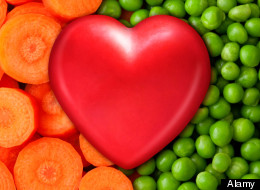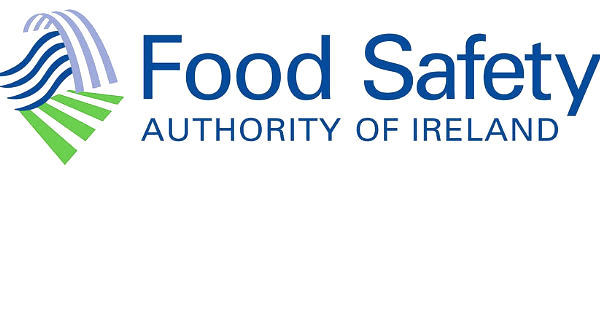Anti-abortion vigil held outside Leinster house in Dublin Tuesday


Several thousand people attended an anti-abortion vigil outside Leinster House in Dublin tonight.
Throughout the vigil, many participants held candles, banners and posters calling for Fine Gael to keep its “pro-life promise”.
Organisers – the Pro-Life Campaign, Youth Defence, the Life Institute, and Family and Life – estimated that more than 10,000 people attended the vigil. Gardaí would not confirm a figure when contacted.
In an impassioned speech, Niamh Uí Bhrian, spokeswoman for the Life Institute, said their anti-abortion stance had not changed.
“We are not for turning and we will not yield,” she said.“We are proud to be a pro-life nation, we are here to tell the politicians in Dáil Eireann that they may have destroyed our economy but we will never let them kill our children.”
She said “The lives of our children are worth fighting for and the mothers who are driven to abortion in fear are worth fighting for and the pro life ethos in this country is worth fighting for.”
Caroline Simons, legal consultant with the Pro Life Campaign said the State was not obliged to legislate for abortion because of the European Court of Human Rights ABC case.
“There is no such obligation,” she said. “All we are supposed to do is clarify our own position in relation to abortion here…We have one of the best maternal mortality rates in the world so abortion is never the answer. It is not going to save mothers lives and we don’t want to see it on our shores.”
Ms Simmons said the vigil took less than a week to organise and that the next step will be an anti-abortion rally
Among those in attendance, were the Archbishop of Tuam Michael Neary, Bishop of Kilmore Leo O?Reilly, Bishop of Killaloe Kieran O?Reilly, Bishop of Ossory Seamus Freeman and the Administrator of Derry diocese Msgr Eamon Martin.
They attended with the full support of their colleagues on the Irish Episcopal Conference who are currently holding their winter meeting at Maynooth.
Catherine Kavanagh from Limerick attended the vigil “to support the pro life cause”.
“I feel innocent life should be protected, it’s a no brainer,” she said.
Alan Hannigan from Dublin who attended the vigil said: “I’m here because abortion is absolutely disgraceful and it shouldn’t be let in to the country. It’s murder. None of us has the right to kill a child and that’s just the way it is. It’s the law of heaven.”
Siobhan Casey from Kerry said people who do not want abortion in Ireland “aren’t necessarily against the mother”.
“I think it’s important to protect the mother and the child. If you’re talking about protecting the child there also needs to be care for the mother such as pre-natal clinics and peri-natal hospices, crisis pregnancy centres, not abortion centres are what is needed at this time.”
The end of austerity is in sight for Ireland claims Minister Gilmore day before budget?


An end to crippling tax hikes and tough spending cuts will be nearly in sight following the Budget, Tanaiste Eamon Gilmore has claimed.
He said while the 3.5 billion euro of adjustments due to be announced on Wednesday will be tough, Ireland will have achieved 85% of its debt bailout targets.
“It will therefore put the end in sight for this type of Budget,” said Mr Gilmore. “What we are seeking to do is to protect the most vulnerable and those that have the most will contribute the most.”
Ireland hopes to exit the bailout programme it entered with the Troika – the IMF, European Central Bank and European Commission – by the end of 2013.
Finance Minister Michael Noonan and Public Expenditure Minister Brendan Howlin will announce the sixth austerity Budget to hit the country since the collapse of the economy in 2008.
They are expected to make the 3.5 billion euro in savings by hiking taxes by 1.25 billion euro and slashing State spending by 2.25 billion euro.
A new property tax imposed on all homeowners will make up much of the new revenue raised. Most will be hit with a charge of 0.18% of the value of their property while those with homes worth more than one million euro will be taxed 0.2%.
Motor tax is also expected to increase, along with the other usual suspects such as cigarettes and alcohol. The elderly are also likely to take a hit, with more pensioners having to pay for prescription drugs due to a cutback in medical cards for the over-70s.
Other cuts expected within social welfare are likely to include a reduction in dole payments to jobseekers without five years of PRSI payments behind them. Back-to-school allowances for clothing and footwear are also likely to face the chop.
Some 24 billion euro in cuts and new taxes have been introduced since the economic crisis began. This included adjustments of 3.8 billion euro in last year’s Budget announcement – among them a VAT hike and a savage 60% motor tax increase for the greenest vehicles. A further 3.1 billion euro package is expected for 2014 and two billion euro of savings for 2015.
Heart attack & Stroke risks cut by about 16% with having a healthy diet


A healthy diet significantly reduces the chances of a second heart attack or stroke in at-risk individuals, research has shown.
It also cuts the risk of congestive heart failure and heart disease-related death, scientists found.
The five-year global study collected data on almost 32,000 people in 40 countries.
Participants with heart disease were asked how often they consumed milk, vegetables, fruits, grains, fish, nuts, meat and poultry.
They were also questioned about lifestyle choices such as smoking, alcohol consumption and exercise.
A healthy diet was defined as one including a high intake of fruits, vegetables, whole grains and nuts, with more fish than meat, poultry or eggs.
Eating healthily was associated with a 14% reduction in the risk of new heart attacks and a 19% reduction in the risk of stroke.
The risk of dying from heart disease was reduced by 35% and of developing congestive heart failure by 28%.
The findings appear online in the American Heart Association Rapid Access Journal.
Study leader Dr Mahshid Dehglan, from McMaster University inCanada, said: “At times, patients don’t think they need to follow a healthy diet since their medications have already lowered their blood pressure and cholesterol – that is wrong.
“Dietary modification has benefits in addition to those seen with aspirin, angiotensin modulators, lipid-lowering agents and beta blockers.
“Physicians should advise their high-risk patients to improve their diet and eat more vegetables, fruits, grains and fish. This could substantially reduce cardiovascular recurrence beyond drug therapy alone and save lives globally.”
Despite differing food habits, a healthy diet was associated with prevention of recurrent heart disease throughout the world in both rich and poor countries.
New food information rules in place for 2014 in Ireland


The labeling and advertising of food products in Ireland are set to be overhauled for the first time in over a decade, the Food Safety Authority of Ireland (FSAI) has said.
According to the authority, under new EU regulations on food information, consumers will be able to make more informed choices about the products they are purchasing.
The new regulations cover not only food labeling, but also activities surrounding the provision of food information to the public, including via internet marketing and social media. They will apply from the end of next year.
“They apply to food businesses at all stages of the food chain and addresses diverse issues such as font size, allergen labelling of non-prepacked foods, nutrition declaration, front of pack labelling and origin labeling,” the FSAI explained.
The authority noted that many Irish food businesses are finding it difficult to comply with current food labeling regulations. This was shown by the fact that of the 914 calls made to the FSAI’s advice line so far this year on issues of labeling, 537 were from the food industry.
“It is clear that many food businesses are trying their best to comply with the legal requirements in this area, but find it difficult,” commented Dr Wayne Anderson of the FSAI.
He called on all food businesses to familiarise themselves with the new EU regulations, which will replace rules that have been in place in Ireland since 2000.
Donegal still the least compliant county as south Dublin has 85% of household’s taxes paid


Residents in part of South Dublin are the most compliant when it comes to paying the Household Charge, according to Government figures.
Up to 85% of those living in the Dun Laoghaire Rathdown local authority area have now paid the charge.
Up to 85% of those living in the Dun Laoghaire Rathdown local authority area have now paid the charge.
 However, those in Donegal have so far been the least compliant at just 55%.
However, those in Donegal have so far been the least compliant at just 55%.
Up to 1.1 million homes have now been registered, still well short of the 1.6 million homes estimated by the Government.
Junior Environment Minister Fergus O’Dowd has refused to say in the Dáil if people will have to pay the Household Charge in January and the Property Tax from July.
Mr O’Dowd said: “There will be total transparecny about what is happening, where it is happening.
“I am not in a position to say now, but I would encourage everybody who has not paid the Household Charge and who is liable for it to pay it.”
Aer Lingus flying high with 2 new awards


Ireland’s national airline Aer Lingus has scooped first place at the prestigious Irish Travel Trade News Awards.
The company won in two categories, including Best Airline to Europe, for the fourth year in a row.
The group was joint winner for the Best Airline to North America, at the 21st anniversary ceremony, held in the Burlington Hotel Dublin last week.
Opportunity Rover Finds Mars Minerals That Formed in Life-Friendly Water


While the main attention has been focused on the Mars rover Curiosity,
NASA’s other active Mars rover, Opportunity, has quietly been going about its business and may have stumbled across an intriguing new geologic puzzle. Opportunity has begun examining ancient clays on Mars that would have formed in the presence of water with neutral acidity, a condition favorable for life as we know it.
“This is our first glimpse ever at an ancient Mars where conditions would be suitable for life,” said astronomer Steve Squyres of Cornell University, the lead scientist for Opportunity’s mission, here at the American Geophysical Union conference on Dec 4.
Previous minerals that Opportunity and its defunct twin Spirit had found thus far on Mars would have required extremely harsh conditions to form, something akin to battery acid, and not very conducive to life. The clays that the rover is now exploring would have been created billions of years earlier in water with a neutral pH. “These clays point to water you could drink,” said Squyres.
Since it landed on Mars in 2004, Opportunity has roved more than 22 miles. After nine years on Mars, the rover is getting a bit old, with a squeaky right front wheel and a creaky arm joint, though is overall in good condition. Last year, the probe arrived at Endeavor crater, where it discovered the most unambiguous evidence for water on ancient Mars ever found.
Scientists directed Opportunity to Endeavor crater to study the clays, which had been spotted earlier from orbit. Roving around one of the half-buried rims of the crater, Opportunity found a small hill that Squyres described as the “sweet spot” where clays are known to be present. The rover took photos showing two types of rocks.
The dominant material is light-toned, flat-lying, and easily eroded by Martian wind. This is the rock that contains the clays and shows a chemistry typical of Martian material. But Opportunity also found a fin sticking up through the dominant rocks made of another material that is dark, gray, and more resistant to erosion.
“What we have stumbled upon is what is turning out to be one of the most delightful geologic puzzles we have ever found on Mars,” said Squyres.
When they drove up to the fin, the science team found it covered in a dense concentration of spherical bubbles quite similar looking to the iron-containing Martian “blueberries” that Opportunity has seen before. But when they looked at the chemical composition of these spheres, scientists found they contained no iron.
“It’s something totally different, and I’ve started calling them ‘newberries’,” said Squyres.
The team doesn’t yet know what these newberries are made of and will spend the next few months investigating them. They could be mineral concretions, impact ejecta spherules, or volcanic hailstones. Squyres said that researchers will also examine the clays to determine what conditions on early Mars would have been like. He said many questions remained and Opportunity had a lot of work ahead of it.
“It’s like we’ve been exploring Mars for nine years, and now Mars has given us a final exam,” said Squyres.
No comments:
Post a Comment